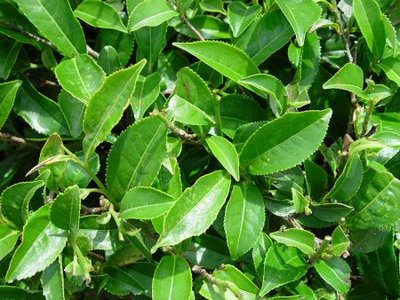Assam Tea is the most common and popular black tea. It is named after the Indian state of Assam, where it is produced. The Assam tea is known for its rich malty taste, briskness and bright colour. Assam tea also has the ability to easily blend with other varieties of black tea. So, it has a good demand all around the world. English Breakfast tea, ,Scottish Breakfast Tea and Irish Breakfast tea are some of the common generic names of Assam tea.

Assam Tea
The Assam tea is manufactured from the leaves of Camellia sinensis var. assamica plant. This tea plant grows only in Assam. Unlike other popular tea varieties, Assam tea plant is grown at or near sea level instead of highlands. The Assam tea plants have two flushes in a year. The first flush is picked during late March. The second flush is harvested later and produces tippy tea, which is considered superior to first flush tea.
Assam is the largest tea growing region in the World. The climate of Assam, specially during monsoon, is perfect for tea cultivation. High rainfall, high temperature and high humidity contributes to the unite malty taste of Assam tea. It’s cultivation area is spread around either side of the Brahmaputra River. Each year, tea gardens in Assam produces more than 1.5 million pounds of tea. Dibrugarh district in upper Assam contributes to majority of this production.
Assam Tea History
The tea bush originated in the area where India, China and Myanmar meet, in the hot wet mountainous regions of the Eastern Himalayas. It was originally eaten and drunk by tribal groups in this area. Over two thousand years ago it was used as a medicine and aid to concentration in China, being helped by the expansion of Buddhism from India.
There exists a 10th century CE Sanskrit medical text from Assam called Nidana that mentions leaves called shamapatra from which shamapani is made. Historians are conflicted as to whether this is the first mention of tea in India. Scottish adventurer Robert Bruce is said to have discovered the tea plant growing wild in this region. According to another account, the Assamese nobleman, Maniram Dewan, led Robert Bruce to the plant in 1823. Before his death in 1825, Robert passed on his knowledge to his brother Charles, who sent seeds of the plant to Calcutta in 1831. In 1833 the British lost the monopoly of the Tea trade with China and the Tea Committee dispatched the secretary George Gordon to China to study the methods and begin tea plantation in Assam. He returned with the Chinese variety and workers. Imported labor from Bihar and Orissa would later form a significant demographic group in Assam. It was found that the local variety of plant was more suited to the local climate. Crossing with the Chinese tea plant led to Indian hybrid tea, which has great variability and vigour. This has been called the most important evolution of the commercial tea plant.
On May 8, 1838, 350 pounds (159 kg) of Assam tea were dispatched to London, and sold at India House, London on January 10, 1839. Drinkers were impressed with the tea, and the tea industry in Assam was born. Charles Bruce and others, including Maniram Dewan, began clearing the jungles and establishing tea estates.
On February 26, 1858 Maniram Dewan, the sole native tea planter, was hanged on charges of conspiracy and participation in the Sepoy Mutiny of 1857 against the British on the basis of an intercepted letter.
Present day Assam tea industry:
Today, Assam produces more than half the tea grown in India. On the international market, Assam Tea can be identified by the official logo chosen by the Tea Board of India. Most Assam tea is sold through the Auction Centre at Guwahati.
Since the tea industry in Assam was established, most tea has been planted unselected by seed using the same practices as in the 19th century. The industry continued to grow slowly but steadily during the 20th century. In the 1970s small scale tea cultivators with farms smaller than one hectare began growing tea. Cultivation on small farms increased during the 1990s and today accounts for over 10% of the tea produced in Assam. Tea cultivation remains a vital industry in the region employing more than 15% of the workforce.
